#postcolonialtheory
Photo
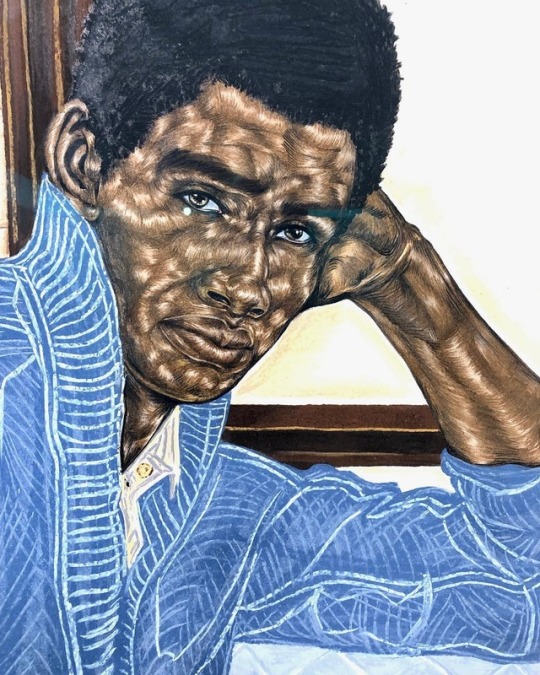
Black identity. Postcolonial struggle. Portrait style like commissioned by aristocrats. Seeking (further) recognition at Oligarch’s art foundation. What would be their attitude if racial oppression had never happened? Nigerian artist Toyin Ojih Odutola’s contribution to the 2019 Future Generation Art Prize. #PinchukArtCentre #fgap2019 @futuregenerationartprize #toyinojihodutola #postcolonialtheory #contemporaryart #Kiev #Kyiv #ukraine (at PinchukArtCentre) https://www.instagram.com/p/BuDZH00lw6_/?utm_source=ig_tumblr_share&igshid=13sw7w0ks5tzs
0 notes
Photo
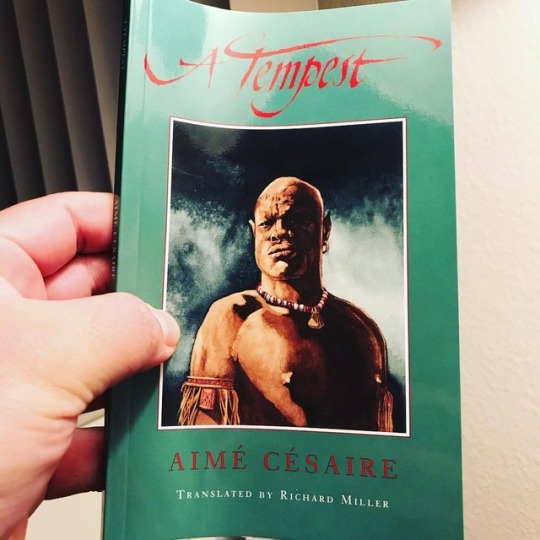
This beautiful piece. #AiméCésaire #postcolonialstudies #postcolonialtheory #literature #poetry #writersofinstagram (at Verano Place Apartments) https://www.instagram.com/p/BsuNqeQl5na/?utm_source=ig_tumblr_share&igshid=10x8g93knsxh5
0 notes
Text
youtube
Watch the 2024 American Climate Leadership Awards for High School Students now: https://youtu.be/5C-bb9PoRLc
The recording is now available on ecoAmerica's YouTube channel for viewers to be inspired by student climate leaders! Join Aishah-Nyeta Brown & Jerome Foster II and be inspired by student climate leaders as we recognize the High School Student finalists. Watch now to find out which student received the $25,000 grand prize and top recognition!
#ACLA24#ACLA24HighSchoolStudents#youtube#youtube video#climate leaders#climate solutions#climate action#climate and environment#climate#climate change#climate and health#climate blog#climate justice#climate news#weather and climate#environmental news#environment#environmental awareness#environment and health#environmental#environmental issues#environmental education#environmental justice#environmental protection#environmental health#high school students#high school#youth#youth of america#school
15K notes
·
View notes
Text
'The Tempest' as a Postcolonial Text
The Tempest as a Postcolonial Text
According to the Oxford English Dictionary (OED), the word ‘colonialism’ emerges out of the Roman ‘colonia’ which translates to ‘farm’ or ‘settlement’. It was a reference to Romans who settled down in other lands while retaining their citizenship. The OED definition of colonialism as Ania Loomba points out in her book Colonialism/Postcolonialism, does not make any reference to the natives, people who might have been living in places where colonies were established. This essay will consider The Tempest in the light of postcolonialism using Loomba’s theories and the relationship between the natives of the island and Prospero, Stephano and Trinculo.
William Shakespeare draws inspiration for The Tempest from William Strachey’s account of a ship that ran into a storm. It was on its way to Jamestown, Virginia. The passengers surprisingly were safe and it resulted in the first colony which was set up in 1607. The play was written in 1611. Loomba states that Shakespeare adds a major component to the play, which was absent in the account. This is the idea of the island being inhabited prior to Prospero’s arrival. It renders the play into an allegory of a colonial encounter, more than a romance. In order for Prospero to sustain his power, there was a certain “re-forming” and “un-forming” (Loomba, 8) that had to be done. It includes practices such as “trade, plunder, negotiation, warfare, genocide, enslavement and rebellions.” (Loomba, 8).
These are some of the factors that distinguish between colonialism in the Genghis Khan era and the modern colonialism. Modern colonialism made sure that there was a link between the economy of the colonized lands and the colonizers’ land. There was a flow of human and natural resources between the colonized and colonial countries. This was in the form of slaves and raw materials. The profits were obtained by the colonial powers. In The Tempest, Prospero uses Ariel and Caliban for their services claiming that he rescued one and raised the other. Ariel and Caliban are not only used for labor, but also are “educated” with the European ideology. Having established the colonized as the ‘other’, the Europeans felt the need to educate what they thought were savages. This idea is talked about by Edward Said in Orientalism where he notes how Arabs were seen as exotic, backward, uncivilized and dangerous. This idea is carried out in the case of Caliban who is described in an animal-like fashion. Prospero accuses him of attempting to rape Miranda in the past, a reason he uses to impose control on him.
Similarly, the idea of the cannibal was used by Columbus and by Spanish colonists later on to justify their brutal practices. Loomba talks about a Martin Frobisher who used an Eskimo for display in England. This idea resonates in The Tempest where Trinculo thinks about the money he could earn by doing the same with Caliban. He muses how people “will lay out ten (coins) to see a dead Indian” (1, ii, 32-33). This is a stereotype. Sander Gilman says that stereotypes promote an “artificial sense of difference between ‘self’ and ‘other’” (Loomba, 55). Prospero, Trinculo and Stephano clearly use this technique to degrade the position of Caliban.
On the other hand, the colonized people, as mentioned earlier with reference to Orientalism, were considered exotic, yet inferior, while the latter considered the former as enviable, and corrupt. This instance can be seen in The Tempest when Prospero refers to Ariel as “delicate” (4, i, 49) and as a “fine apparition” (1, ii, 319) but also reminds Ariel that he is a “malignant thing’ (1, ii, 259). Caliban views Prospero as powerful and desires to overthrow him. This highlights the ambivalent relationship that the two parties share. The idea of the colonized being “exotic” is carried out across the geography of the colonized land. This results in the colonizer using the colonized as a medium to access resources and ‘secrets’ of the land and culture. It shows how the colonizer considers it necessary to tame not only the natives, but also the land itself. Another factor used to create the binary of the European and non-European is the language.
Peter Hulme refers to two words which were derived from Native American languages. The words ‘cannibal’ and ‘hurricane’ were used to widen the gap between the colonizer and the colonized. Hurricane was referred to as a tempest, unique to the Caribbean and suggested the supposed violence and savage condition of the place. Similarly, cannibalism was not merely a synonym for ‘anthropophagi’ (savages who eat their own kind). Cannibalism was a marker for the threat the savages posed against Europeans, as Loomba points out. As a natural phenomenon and a cultural practice, the terms designated anything that was situated outside Europe. ‘Canis’ is a Latin word referring to dog, and the view was that the people of the Caribbean treated their victims in a ferocious, predatory manner. It is no surprise that Caliban is an anagram for cannibal (negating the ‘n’) and also explains why Prospero uses dogs to attack the rebels as Hulme points out. Cannibalism was also used as a pretext to justify the taking over the American lands.
Apart from the image of the cannibal, the image of the colonized as a dark-skinned rapist is established. Prior to this, the colonizers were seen as the rapists who plundered countries. The narrative changed with time. Caliban, too is alleged of an attempt to rape Miranda. The notion of the savage rapist, as Loomba argues, “…deflects the violence of the colonial encounter from the colonizer to the colonized” (Loomba, 70). Jenny Sharpe in her book Allegories of Empire: The Figure of Women in the Colonial Text demonstrates how Indians were seen as mild and meek until the 1857 revolt. Following this, the ‘mild Hindoo’ became a sexual predator who raped British women. Sharpe suggests that the rebellion left the British “without a script on which they could rely” (Sharpe, 67). Caliban is the more rebellious of the slaves. Ariel is mild and soft spoken. Caliban’s rebelliousness ears him the place of a savage rapist.
This brings up the need for civilizing the ‘savage’. The phrase ‘white man’s burden’ was used as an ideology to denote the duty of the white colonizers to educate the colonized with western ideologies in order to ‘help them out’. In the play, Prospero educates Caliban and teaches him the former’s language. Caliban exclaims “You taught me language, and my profit on’t / Is I know how to curse. The red plague rid you / For learning me your language!” (1, ii, 365-367). It is similar to the ‘subaltern’, a term coined by Antonio Gramsci to identify people excluded from society’s established institutions. Gayathri Spivak notes how the subaltern, in order to be heard, must adopt the Western language. Caliban, similarly, uses Prospero’s language to insult him and express his discontentment. Through his language, the colonizer creates narratives to explain the local history of the colonized land. These narratives overwrite and silence the local narratives. Prospero repeatedly tells Caliban and Ariel about how he rescued them. The story of Caliban’s childhood and Ariel’s imprisonment is continually repeated by Prospero. Joseph Goebbels says “If you tell a lie big enough and keep repeating it, people will eventually come to believe it.” So the questions one needs to consider while looking at The Tempest as a colonial text are – Did Caliban really try to rape Miranda, or could it possibly be a narrative used to oppress him, and one also needs to consider how much of the native perspective is highlighted. However, one does see Caliban claiming his authority over the island, as he is the true inhabitant and considers Prospero as an outsider. It is visible in the lines where Caliban says “This island’s mine, by Sycorax my mother, / Which thou takest from me.” (1, ii, 333-334). This leads to the representations of the play as a depiction of colonial oppression. In the 1960s and 1970s, de-colonization movements began in Africa, Caribbean and Latin America. The anti-colonial writers challenged the notion of Prospero’s ‘art’ being considered as a part of the civil world, while Sycorax’s natural black magic is considered evil. Writers began defending Caliban’s right to the island. The lines quoted at the end of the preceding paragraph highlights this. Aimé Césaire, a black writer from Martinique rewrote the play to celebrate Caliban’s verbal attacks on Prospero and questions his claim to the island. In Jonathan Miller’s 1988 production of The Tempest, Prospero is a white colonizer and Caliban is a black slave. In David Thacker’s 1995 production, Ariel was played by a woman with face paint of a Native American Indian. Hence it is evident how the text was interpreted from an anti-colonial point of view, recognizing the postcolonial ideologies and representations in the original text.
On a similar note, Joanne Drayton in her article talks about how chess is seen as a metaphor for the “postcolonial relationship between Maori (indigenous Polynesian people of New Zealand) and Pakeha (New Zealander of European descent) in Aotearoa New Zealand.” (Drayton, Researchgate). It brings about questions of diaspora and the idea of the carrying of culture, since chess has been attributed to Viking culture. In the play, one finds Ferdinand and Miranda playing a game of chess. This symbolizes how Prospero’s every move is calculated and used to manipulate the rest of the characters in in the play.
With regard to a counter-view when studying the play as a postcolonial text, Meredith Anne Skura suggests that the parallels to colonial discourse are unintentional and cannot be taken seriously. She claims that the exploitation of people has been dealt with in several other plays of Shakespeare, and that it was too early for the colonial ideology to set in, since the play was written merely four years after the setting up of a colony in Virginia. She further explains how the characters can be seen as manifestations of human personalities. Caliban could be a representation of Prospero’s evil side. The latter acknowledges this at the end of the play when he says “This thing of darkness I / Acknowledge mine.’ (5, i, 277-278). Skura makes several important points including the fact that Caliban is not a representation of the cannibal, since he does not eat meat, instead “confining himself more delicately to roots, berries and an occasional fish” (Skura, 59).
However, as pointed out by Loomba, the fact that the playwright added the presence of inhabitants, slavery, narratives, and a subjugation and exploitation of the inhabitants renders the play as a portrayal of colonialism, whether or not the writer intended to represent it in that light. In popular culture, one sees colonial ideas and attitudes, for instance, in the Tintin comics, the artist depicts gypsies, native Americans, and Indians in a racist and stereotypical light, and the same can be said about the film Indiana Jones and the Temple of Doom. Professor Yvette Rosser comments on how the film is a racist portrayal of Indians. Kayleigh Donaldson in her article Problematic Faves: Indiana Jones talks about the blatant racist outlook on Indians and South Asians, as the Hindus are represented as blood drinking, demon worshiping savages with odd and revolting food habits. Hadley Freeman highlights the racism in the movie in her article Blacking up, wacky Asians and the Libyans: the worst of 80s movie racism, where she makes references to the racist representations of Blacks and Asians. Hadley Freeman hardly finishes pointing at how the films have shown to be racist, when the stark irony is revealed, when she exclaims “Ha ha ha, Asian people are GROSS” (Freeman, The Guardian) .This goes on to show how racism and stereotypical notions along coupled with the white man’s superior attitude still permeate the society today, as a result of colonization.
To conclude, The Tempest has been considered from a postcolonial critical viewpoint, since it embodies the attitudes, practices and ideologies of the European colonizer. It has also been observed how colonization has led to racism and stereotypes that still exist in today’s society.
WORKS CITED:
Books
Loomba, Ania. (2005). Colonialism/Postcolonialism. Routledge, 2005.
Shakespeare, William, and John Crowther. The Tempest. Sparknotes, 2003.
Speaight, Robert. Shakespeare On The Stage. Little, Brown, 1973.
Sharpe, Jenny. Allegories Of Empire. University Of Minnesota Press, 1993.
Gilman, Sander. Difference and Pathology: Stereotypes of Sexuality, Race and Madness. Cornell University Press, 1985.
Websites
Donaldson, Kayleigh. "Problematic Faves: Indiana Jones". SYFY WIRE, 2019, https://www.syfy.com/syfywire/problematic-faves-indiana-jones. Accessed 2 Apr 2019.
Freeman, Hadley. "Blacking Up, Wacky Asians And The Libyans: The Worst Of 80S Movie Racism". The Guardian, 2019, https://www.theguardian.com/film/2015/may/10/wacky-asians-blacking-up-and-the-libyans-the-worst-of-80s-movie-racism. Accessed 2 Apr 2019.
"Joseph Goebbels On The "Big Lie"". Org, 2019, https://www.jewishvirtuallibrary.org/joseph-goebbels-on-the-quot-big-lie-quot. Accessed 2 Apr 2019.
"Production History | The Tempest | Royal Shakespeare Company". Org.Uk, 2019, https://www.rsc.org.uk/the-tempest/past-productions/production-history. Accessed 2 Apr 2019.
Anne Skura, Meredith. Discourse And The Individual: The Case Of Colonialism In "The Tempest". 1989, https://www.jstor.org/stable/2870753. Accessed 2 Apr 2019.
#shakespeare#postcolonialism#Literature#article#Theory#postcolonialtheory#art#Theatre#thetempest#play#drama
1 note
·
View note
Photo
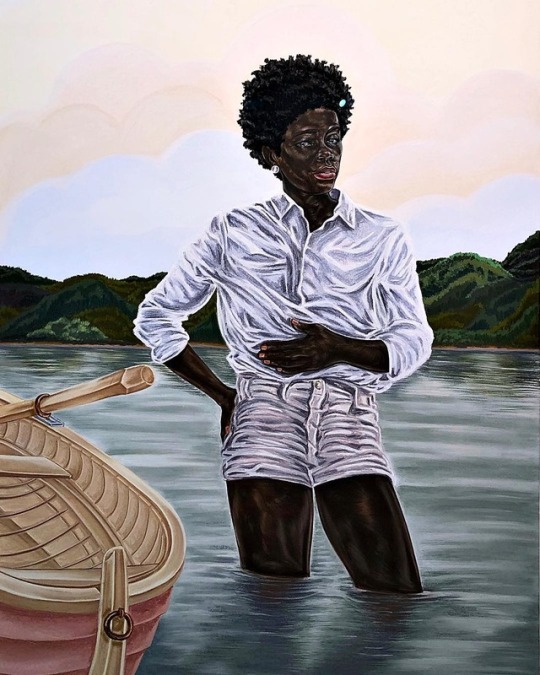
Black identity. Postcolonial struggle. Portrait style like commissioned by aristocrats. Seeking (further) recognition at Oligarch’s art foundation. What would be their attitude if racial oppression had never happened? Nigerian artist Toyin Ojih Odutola’s contribution to the 2019 Future Generation Art Prize. #PinchukArtCentre #fgap2019 @futuregenerationartprize #toyinojihodutola #postcolonialtheory #contemporaryart #Kiev #Kyiv #ukraine (at PinchukArtCentre) https://www.instagram.com/p/BuDZCfXlt-q/?utm_source=ig_tumblr_share&igshid=z63b9ifls07a
0 notes
Photo
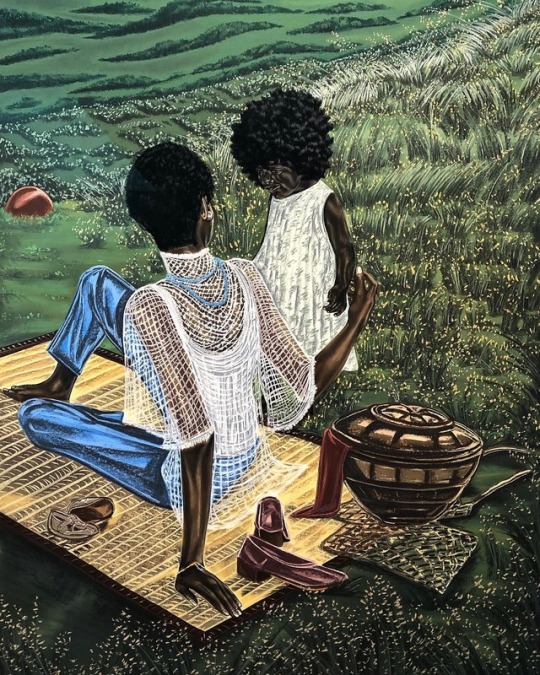
Black identity. Postcolonial struggle. Portrait style like commissioned by aristocrats. Seeking (further) recognition at Oligarch’s art foundation. What would be their attitude if racial oppression had never happened? Nigerian artist Toyin Ojih Odutola’s contribution to the 2019 Future Generation Art Prize. #PinchukArtCentre #fgap2019 @futuregenerationartprize #toyinojihodutola #postcolonialtheory #contemporaryart #Kiev #Kyiv #ukraine (at PinchukArtCentre) https://www.instagram.com/p/BuDY7wKFIH4/?utm_source=ig_tumblr_share&igshid=3f4xijbvmowj
0 notes
Photo

Black identity. Postcolonial struggle. Portrait style like commissioned by aristocrats. Seeking (further) recognition at Oligarch’s art foundation. What would be their attitude if racial oppression had never happened? Nigerian artist Toyin Ojih Odutola’s contribution to the 2019 Future Generation Art Prize. #PinchukArtCentre #fgap2019 @futuregenerationartprize #toyinojihodutola #postcolonialtheory #contemporaryart #Kiev #Kyiv #ukraine (at PinchukArtCentre) https://www.instagram.com/p/BuDYgitFgJf/?utm_source=ig_tumblr_share&igshid=1ib1c8wkzm2q6
0 notes
Text
youtube
Watch the American Climate Leadership Awards 2024 now: https://youtu.be/bWiW4Rp8vF0?feature=shared
The American Climate Leadership Awards 2024 broadcast recording is now available on ecoAmerica's YouTube channel for viewers to be inspired by active climate leaders. Watch to find out which finalist received the $50,000 grand prize! Hosted by Vanessa Hauc and featuring Bill McKibben and Katharine Hayhoe!
#ACLA24#ACLA24Leaders#youtube#youtube video#climate leaders#climate solutions#climate action#climate and environment#climate#climate change#climate and health#climate blog#climate justice#climate news#weather and climate#environmental news#environment#environmental awareness#environment and health#environmental#environmental issues#environmental justice#environment protection#environmental health#Youtube
15K notes
·
View notes
Photo

Black identity. Postcolonial struggle. Portrait style like commissioned by aristocrats. Seeking (further) recognition at Oligarch’s art foundation. What would be their attitude if racial oppression had never happened? Nigerian artist Toyin Ojih Odutola’s contribution to the 2019 Future Generation Art Prize. #PinchukArtCentre #fgap2019 @futuregenerationartprize #toyinojihodutola #postcolonialtheory #contemporaryart #Kiev #Kyiv #ukraine (at PinchukArtCentre) https://www.instagram.com/p/BuDYHguFIfx/?utm_source=ig_tumblr_share&igshid=h5a6874asz93
0 notes
Photo
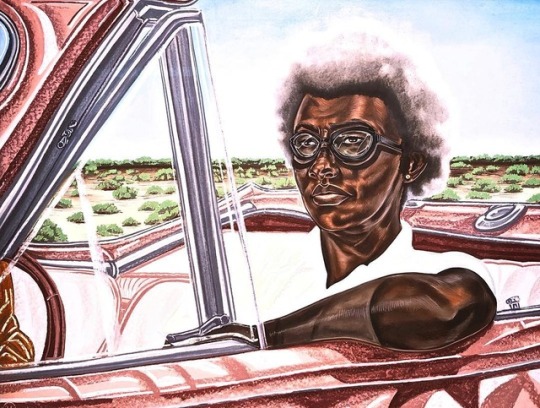
Black identity. Postcolonial struggle. Portrait style like commissioned by aristocrats. Seeking (further) recognition at Oligarch’s art foundation. What would be their attitude if racial oppression had never happened? Nigerian artist Toyin Ojih Odutola’s contribution to the 2019 Future Generation Art Prize. #PinchukArtCentre #fgap2019 @futuregenerationartprize #toyinojihodutola #postcolonialtheory #contemporaryart #Kiev #Kyiv #ukraine (at PinchukArtCentre) https://www.instagram.com/p/BuDX-kKFZ9V/?utm_source=ig_tumblr_share&igshid=1n5a4o0jnrdnx
0 notes